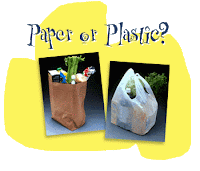When I lived in Hungary I needed a hair cut, but I was too scared to go into hair salon. I was so scared that they wouldn’t understand what I wanted cut and I’d end up with a Mohawk. Since I didn’t know any Hungarian at all, I ended up not getting my hair cut for months! Eventually, I got a student to go with me and help me out. What is the moral of this story? I don’t want you to end up with hair all of the way down to your knees if you visit the US. So, I’m making a post on what to say in English when you go to the hair salon.
hair salon – The place where you get your hair cut. It can also be called a barber shop, but that is only where men get their hair cut. Also, it could be called a beauty parlor, but that is only a place where women get their hair cut and it is an older phrase.
hairdresser – This is the person who cuts your hair (also called a hairstylist). A barber is the person who cuts men’s hair in a barber shop.
hairstyle terms – The cool thing about telling your hairdresser how you want your hair cut is that you can look through books they have and just point to what you’d like. I do this sometimes. Here are some English terms that might help if you want a more specific cut.
bob – This is a haircut that ends in a blunt line. Bobs are usually short.
undercut – This is how they cut your hair so that it naturally turns under without curling.
bangs – (fringe in the UK) – this is the part of your hair that covers your forehead.
layered – This is when they cut your hair in different lengths.
mullet – It’s a hairstyle mainly from the 80s. The sides were short layers and the back of the hair was long.
pixie cut – This is when your haircut is short and layered like a elf or pixie.
inches – Make sure you know your inches. Americans aren’t good with converting cms to inches, so it’s better to be safe (than sorry) and convert them before you go. 1 inch = 2.54 cm.
a wash and go style – This is an expression you can use if you want a hair style where there is nothing you need to do to it. You just wash your hair and go to work/school.
blow drying – They might ask you if you want your hair blow dried so you don’t walk out with wet hair.
styling – Depending on where you get your hair cut, styling is sometimes not included in the price. Styling consists of blow drying, curling and anything else needed to make your hair look its best.
highlights – This is what you ask for when you want a little extra color in your hair.
perm – This is what you ask for when you want them to put a permanent curl in your hair.
colored/dyed – This is what you ask for when you want all of your hair to be a different color.
Now you can practice these terms in this dialog below:
Dialog –
******
Hairdresser – How would you like your hair cut?
You –
Hairdresser – How many inches would you like off?
You –
Hairdresser – What should I do with your bangs?
You –
Hairdresser – Do you want it washed and styled?
You –
******
How did you do? Do you feel like you did okay? Let me know if you have any questions or need help!
 I’m about to take a vacation, so I have vacations on my mind! Here’s a post about the vacation and holiday norms of the United States.
I’m about to take a vacation, so I have vacations on my mind! Here’s a post about the vacation and holiday norms of the United States. 

 It’s sweltering hot outside and you need some relief. In the distance you see a ice cream parlor. “Perfect,” you think. This is just what I need. You walk into the ice cream shop and you see a gazillion different flavors. Uggghhh, how will you chose? What will you say?
It’s sweltering hot outside and you need some relief. In the distance you see a ice cream parlor. “Perfect,” you think. This is just what I need. You walk into the ice cream shop and you see a gazillion different flavors. Uggghhh, how will you chose? What will you say? 